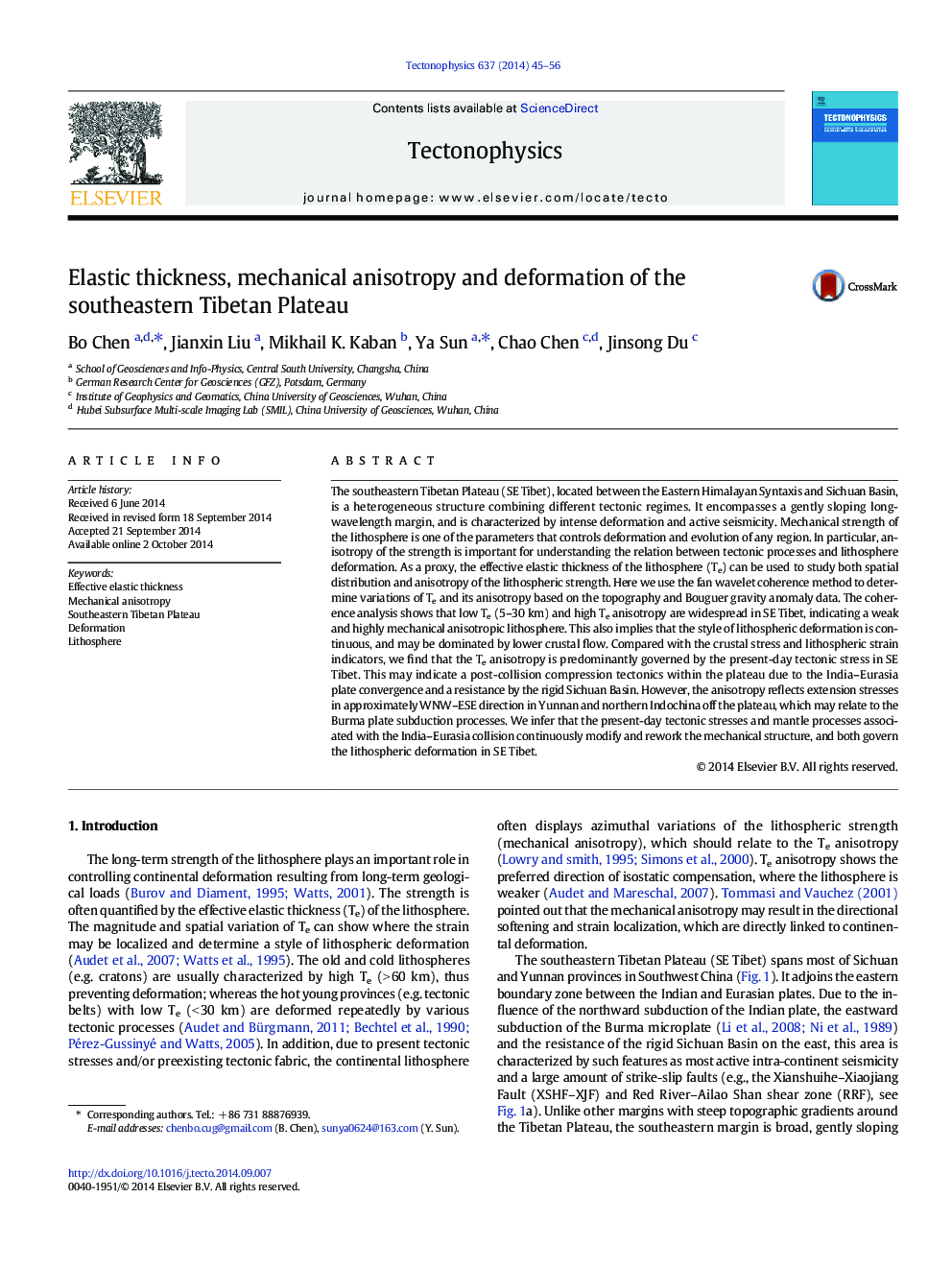| Article ID | Journal | Published Year | Pages | File Type |
|---|---|---|---|---|
| 6433750 | Tectonophysics | 2014 | 12 Pages |
â¢The Te and its anisotropy for the SE Tibet and surroundings are obtained.â¢Estimated results indicate a weak and highly anisotropic lithosphere in SE Tibet.â¢Te anisotropy records lithospheric deformation and present-day intraplate stresses.â¢Tectonic stress and mantle processes modify and rework the mechanical structure.
The southeastern Tibetan Plateau (SE Tibet), located between the Eastern Himalayan Syntaxis and Sichuan Basin, is a heterogeneous structure combining different tectonic regimes. It encompasses a gently sloping long-wavelength margin, and is characterized by intense deformation and active seismicity. Mechanical strength of the lithosphere is one of the parameters that controls deformation and evolution of any region. In particular, anisotropy of the strength is important for understanding the relation between tectonic processes and lithosphere deformation. As a proxy, the effective elastic thickness of the lithosphere (Te) can be used to study both spatial distribution and anisotropy of the lithospheric strength. Here we use the fan wavelet coherence method to determine variations of Te and its anisotropy based on the topography and Bouguer gravity anomaly data. The coherence analysis shows that low Te (5-30Â km) and high Te anisotropy are widespread in SE Tibet, indicating a weak and highly mechanical anisotropic lithosphere. This also implies that the style of lithospheric deformation is continuous, and may be dominated by lower crustal flow. Compared with the crustal stress and lithospheric strain indicators, we find that the Te anisotropy is predominantly governed by the present-day tectonic stress in SE Tibet. This may indicate a post-collision compression tectonics within the plateau due to the India-Eurasia plate convergence and a resistance by the rigid Sichuan Basin. However, the anisotropy reflects extension stresses in approximately WNW-ESE direction in Yunnan and northern Indochina off the plateau, which may relate to the Burma plate subduction processes. We infer that the present-day tectonic stresses and mantle processes associated with the India-Eurasia collision continuously modify and rework the mechanical structure, and both govern the lithospheric deformation in SE Tibet.
